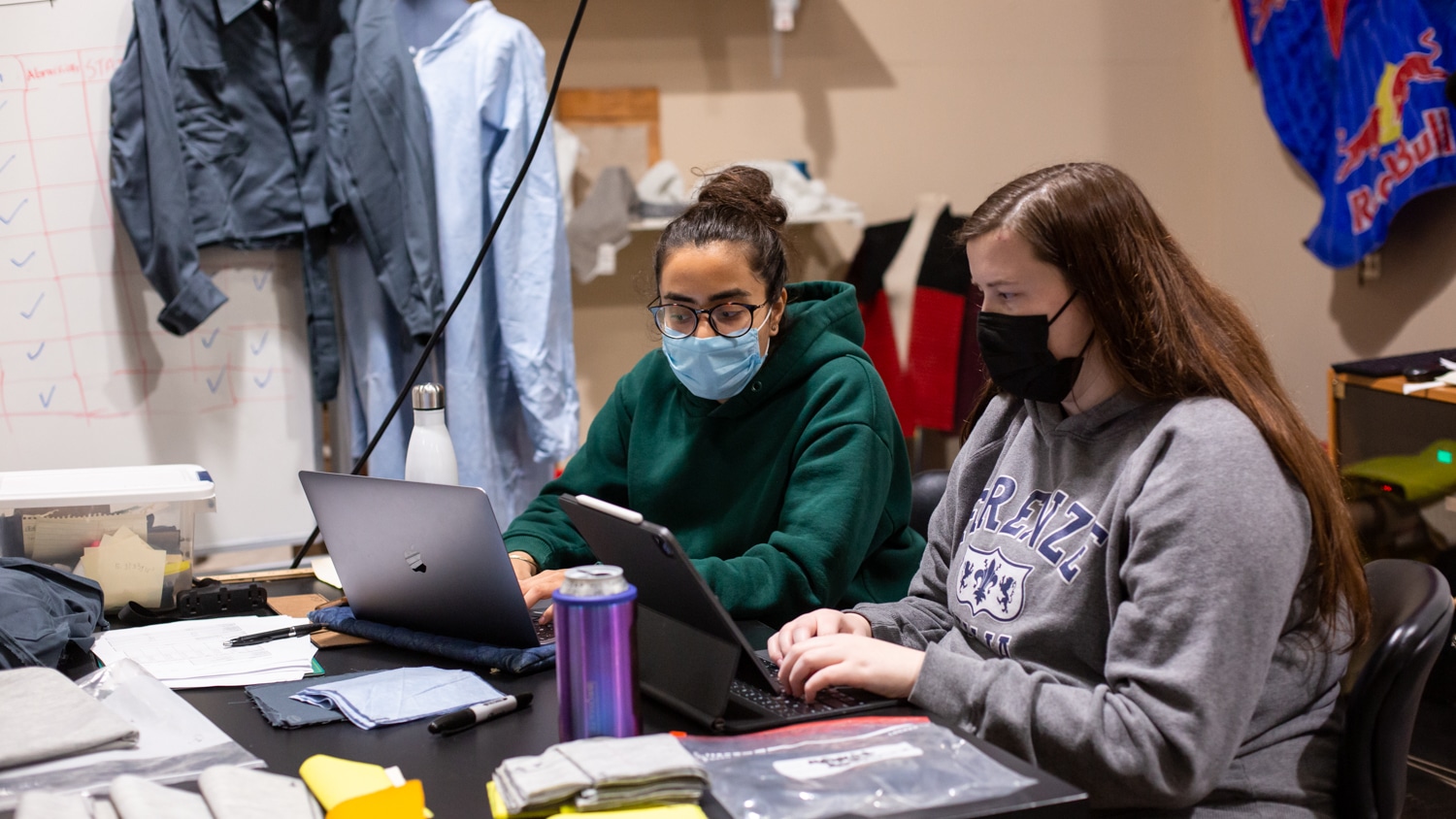Wilson College of Textiles Students Develop More Sustainable PPE

By Sarah Stone
You don’t have to compromise on sustainability in order to produce protective textiles. That’s what a group of textile engineering (TE) and textile technology (TT) students proved during their Senior Design project with Pine Bluff Arsenal (PBA), a small U.S. Army installation in Southeast Arkansas.
The capstone course groups seniors in TE and TT into teams and pairs them with an industry sponsor on a year-long project. Assignments run the gamut from testing methods to applications of new technologies to product development.
Identifying the problem
PBA houses a clothing and textiles operation that makes a number of garments for the U.S. Army, including chemical-and-flame-resistant coveralls. These personal protective equipment (PPE) coveralls prevent workers manufacturing HC smoke mix filled munitions from coming into contact with hexachloroethane vapors (a substance commonly used in military devices like smoke grenades).
Although the existing PPE coveralls worked, they were made of coated paper, and were only designed for a limited number of uses before they were discarded., and therefore unsustainable.

“They’ve been running into issues where after three to seven uses, the garment is rendered useless, so they want to be able to make it more durable,” Owen Lindey (B.S. TT ’22) explains.
To solve this problem, leaders at PBA asked Lindey and his team members, Maddie Wilson (B.S. TT ’22) and Gunnika Ahuja (B.S. TT ’22) to develop a new PPE suit that would be machine washable. The team was also tasked with improving the comfort, flame resistance and antimicrobial finishing of the coveralls. In order to do this, they needed to determine which textile worked best with the protective laminate used.
Developing a solution
Choosing a new textile for the new coveralls came down to testing, testing and more testing using Wilson College’s labs.
The number one priority was to make sure that the new PPE would be just as effective as the existing PPE coveralls. That meant conducting particle filtration testing to make sure that no harmful chemicals were able to pass through the coveralls. The Nonwovens Institute on Centennial Campus helped them conduct multiple rounds of these permeability tests.
Next, they looked to see which remaining textiles would meet the launderability standards PBA had given them.

“We had to see if the fabric holds up to 10 cycles of washing and there’s no changes in the dimensions of the fabric,” Maddie Wilson explains.
Throughout the project, scientific review boards with the Senior Design directors provided the feedback needed to keep them on track.
“Some of the biggest feedback we received was to make sure that we’re standardizing, so normalizing the data based on fabric weight and other factors,” Wilson says.
What’s Next?
Ultimately, this Senior Design team found six possible materials for these PPE coveralls. The next step will be for Pine Bluff Arsenal to choose which one they’ll use based on factors like cost and static charge.
This marked the second year of partnership between the Wilson College’s Senior Design Program and the Pine Bluff Arsenal. Mark Springer, chief of PBA’s Engineering and Technology Systems Engineering Division says he hopes that partnership continues.
“The students we’ve worked with have been really well prepared and they’ve done a really good job.”

- Categories: